Wait, Are Carbs Actually Awesome?
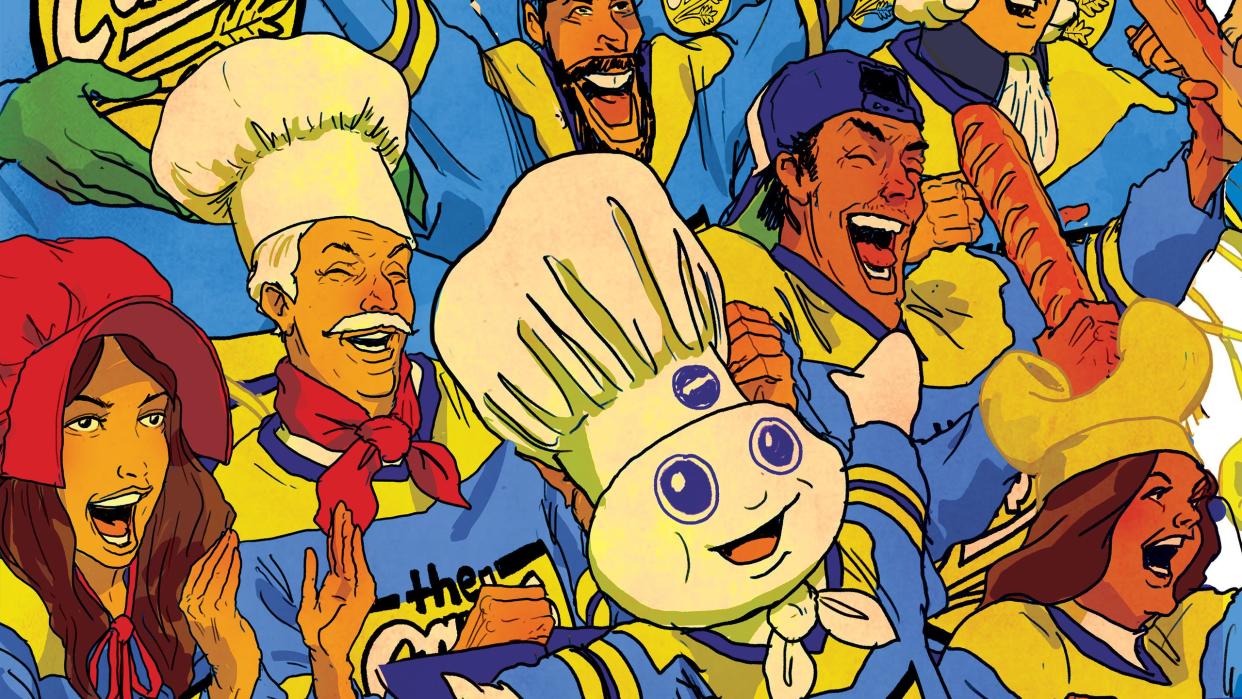
- Oops!Something went wrong.Please try again later.
"Hearst Magazines and Yahoo may earn commission or revenue on some items through these links."
WHEN MEN COME to Katherine Metzelaar for help, they seem to have one thing on their mind.
Metzelaar is a Seattle-based dietitian specializing in nutritional therapy. With patient eyes and a warm, easy smile, she’s the kind of expert who helps her clients untangle their attitudes and beliefs about food. In her nine years of clinical practice, she says that 100 percent of her male clients have shared one fear: carbohydrates. “Guilt is a very common emotion associated with eating carbohydrates,” Metzelaar says. “And then if you restrict those foods, you’re going to feel out of control.”
Fear—of carbs.
Except that when you look back at the millennia-spanning history of carbohydrates, their stigma makes total sense. More than fat, more than artificial ingredients, more than GMOs—carbs have long been a scapegoat for ancient philosophers, class warriors, and creators of money-raking fad diets alike. Carbs will shorten your life, as the drumbeat goes. Carbs are blood-sugar-spiking empty calories. Carbs will make you fat, sick, and unhappy.
Over the past few decades, however, scientists have built a more evolved view of carbohydrates. This class of nutrients has been unfairly blamed for obesity, diabetes, and other health terrors. New research is showing that carbs are a driver for a long, healthy, and active life. And as it turns out, avoiding carbs can be bad for you, too. A few recent studies have linked low-carb/high-fat diets with an increased risk of cardiovascular events and shortened life spans in men.
But still: the collective and ongoing freak-out about carbs. So if you’re confused, skeptical, and/or fearful about carbs, Metzelaar gets that. As she tells her clients, your anxiety toward carbohydrates likely goes way back.
So let’s go way, way back.

THE DAWN OF THE CARBS
UNLESS YOU'VE BEEN living under a mastodon for the past 2.5 million years, you’ve likely heard of the Paleo diet. The modern protein-centric, starch-averse diet instructs its followers to avoid grains, legumes, added sugars, and carb-dense vegetables such as corn, jicama, peas, and white potatoes. Our fitter, stronger, healthier ancestors didn’t eat these foods during the Paleolithic period, proponents of the diet argue, so neither should you.
But the diet isn’t based in prehistoric fact. A groundbreaking 2021 study in the journal PNAS found that our Paleolithic ancestors—and their close Neanderthal cousins—ate so many starchy foods. Their glucose-rich diet of grasses, tubers, and cooked barley fueled their brains’ rapid expansion. And mounting archaeological evidence shows that calorically dense starchy foods were foundational to almost every culture, ever. Yes, carb-loading helped you evolve into the man you are today.
But there are early instances of carbohydrate avoidance, too. Ancient texts detail a practice known as “bigu,” which directed Chinese Taoist priests to abstain from grain, in what was arguably history’s first low-carb diet. The goal wasn’t weight loss but ascension to immortality. (Didn’t work.)
Halfway across the world, in another century, a different foundational carbohydrate faced condemnation. The potato, an easily cultivated tuber from the Americas, was panned as “tasteless and starchy” by the influential 18th-century French philosopher Denis Diderot. To twist the paring knife deeper, he described the potato as a “reasonably healthy food for men who want nothing but sustenance.”
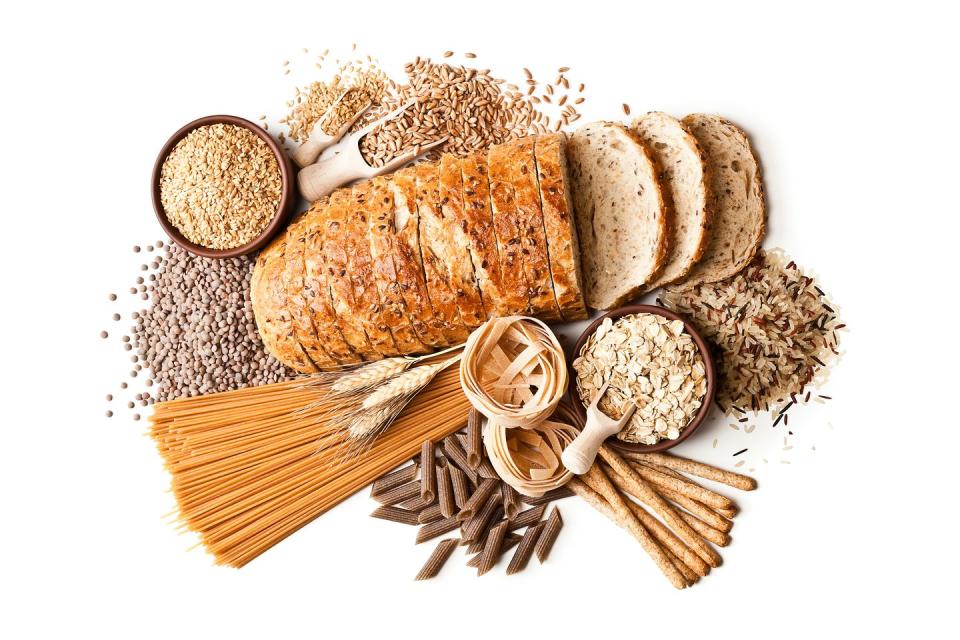
Diderot wasn’t the only upper-class European to devalue the spud. Despite the fact that the potato eventually became a staple and effectively doubled Europe’s food supply, the English disparaged the tuber because the Irish people they colonized ate so much of it. “Even though the Irish were healthy and tall, the English insisted that potatoes were unhealthy and uncivilized,” says Kimberley Connor, Ph.D., a culinary historian at Stanford University.
An 1846 editorial in The Times of London even suggested that the Irish were lazy and responsible for their own starvation during the famine. “When the Irish cease to eat just potatoes they must become meat eaters. With the taste of meat will grow an appetite for more meat; with this appetite comes a readiness to earn the money to pay for the meat.” (Never mind that meat was more expensive and the poor Irish didn’t really have a choice.) In the aristocracy of food, protein has long reigned as king.
Grain and white potatoes—the underlying demonization of carbs was simmering before the word carbohydrates even existed. That classification happened in 1844, when German chemist Carl Schmidt used the term to describe the structure of a class of chemical compounds. From a chemistry standpoint, a carbohydrate is made up of carbon (the “carb” part), hydrogen (the “hydrate” part), and oxygen.
That’s important, because the term carbohydrate encompasses a massive variety of sub-nutrients. There are simple sugars, such as glucose and fructose, which are found in fruit. Midsize molecules, such as stachyose, are found in legumes like chickpeas. Very large molecules make up starch (the main component of wheat flour) and pectin (an indigestible soluble fiber found in fruit like apples and lemons). This overarching classification was handy for chemists but also opened carbs up to overgeneralization—and, eventually, structured trendy diets that banned them outright.
Although there were earlier low-carb diets from around the same time period, the Banting-Harvey plan of 1863 was the first true low-carb craze. William Banting, a well-to-do Victorian retired undertaker, had tried and failed with numerous weight-loss methods. When his regular physician was unavailable, Banting met William Harvey, an ear surgeon with an enthusiasm for experimental medicine. Harvey put Banting on what amounted to a low-carb, high-protein diet, and Banting lost weight—fast. Inspired by his own miraculous transformation, Banting penned a short pamphlet called “Letter on Corpulence” that went on to be a runaway best seller.
“My impression is that any starchy or saccharine matter tends to the disease of corpulence in advanced life,” he wrote. The medical establishment of the time labeled him a dangerous unscientific “quack.” But this criticism didn’t dampen the passion of the diet’s devotees, one of whom was so committed that he reportedly followed the Banting-Harvey plan to his death.
To call Banting’s followers zealots wouldn’t be far off. The diet owes its success to the way Banting connected Christian moral overtones with discipline, restraint, and peak health—as defined by thinness, wrote researcher Jaime M. Miller, Ph.D.
If all that sounds eerily similar to many modern fad diets, you’re not wrong. The Banting-Harvey plan walked so that the most popular low-carb diet plan ever could run.

ENTER DR. ATKINS
LONG BEFORE ROBERT Atkins, M.D., created the now legendary Atkins diet, he had his own private cardiology practice in New York City. His early clinical work focused on finding an alternative to what he saw other doctors doing: treating overweight patients by prescribing them amphetamines. And like Banting before him, Dr. Atkins himself tried a low-carb diet, lost weight, and became an advocate.
In 1972, he published Dr. Atkins’ Diet Revolution, which told readers to not count calories, to eat as much steak and butter as they wanted, and that carbs are “poison—don’t forget it.” While Dr. Atkins insisted his diet was based on “careful clinical observation of 10,000 obese subjects studied for nine years,” he did not actually publish any measurable clinical data to support his claims.
What he lacked in scientific rigor, however, he made up for with his gift for drama. He dedicated Diet Revolution to “all of the diet revolutionaries who are not content merely to follow their own diet, but who are dedicated to carrying the message of the diet revolution to the world which needs it.”
Atkins was more than a diet; it was a mindset of bold, antiestablishment individualism. Dr. Atkins’s advice sounded in open defiance of the nutritional hard line of the time, that diets high in saturated fat were the cause of an unprecedented spike in heart disease. In an echo of the Banting era, the medical establishment condemned Dr. Atkins’s recommendation as “unscientific, unbalanced,” and “potentially dangerous.”
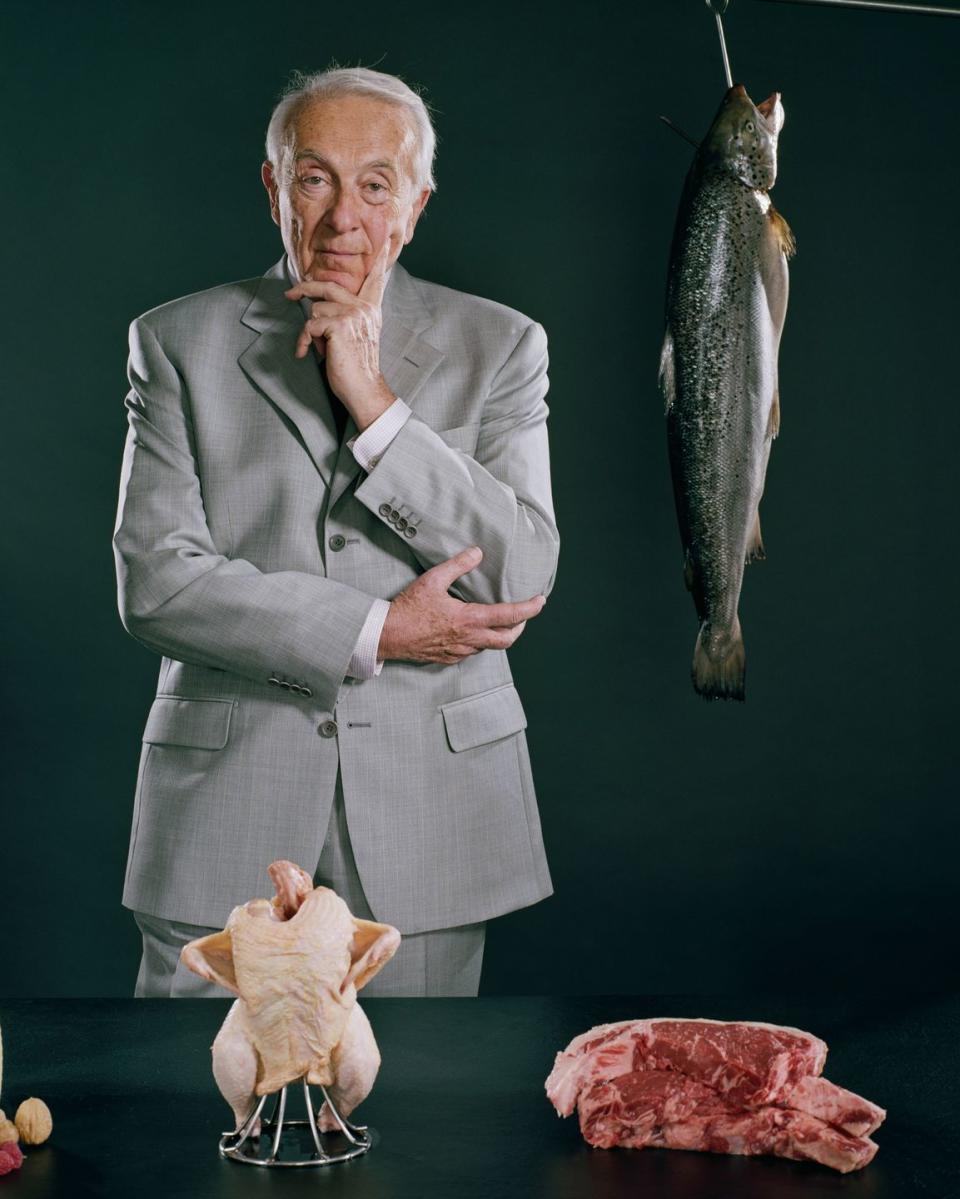
Although Dr. Atkins’s diet found modest success in the ’70s, events in the ’90s enhanced its popularity and powered a low-carb revolution. The World Health Organization declared obesity an epidemic in 1997, and the CDC was calling diabetes an epidemic by 2001.
In response, the U. S. ramped up public-health messaging in what critics described as a “war on [dietary] fat.” But between 1971 and 2011, the percentage of overweight Americans increased from 42 to 66 percent. Diabetes rates climbed. Fat wasn’t making us gain weight, so maybe carbs were—a sentiment that only emboldened Dr. Atkins.
In the 2002 edition of his New Diet Revolution book, Dr. Atkins gloated that “widespread dissemination of misinformation about what constitutes a healthy diet had caused... twin epidemics [of] obesity and diabetes, clearly the result of the low-fat, high-carbohydrate diet that was preached to the public as gospel.”
The message for confused consumers eager to lose weight—and reintroduce delicious fat into their bland, boring diets—was now refreshingly simple (and Dr. Atkins approved!): carbs bad.

LOW-CARB EVERYTHING
AS THE PUBLIC'S resistance to carbs proliferated and intensified in the ’90s, confusion grew, too. “When people think of carbs, the mental image they have is probably cakes and cookies with sugar frosting,” says nutrition and obesity researcher Adam Drewnowski, Ph.D., who heads the Center for Public Health Nutrition at the University of Washington. “But there is a hierarchy of carbohydrate qualities. On the lower end you have added sugar, and on the higher end you will have whole grains—it’s a huge continuum.”
The most well-known early attempt to untangle this hierarchy was the glycemic index (GI), a diabetes-management tool first developed by Canadian nutrition scientist David Jenkins, M.D., Ph.D., in the 1980s. To construct the GI, which is essentially a food scorecard, Dr. Jenkins and his team fed study participants various foods in controlled quantities and settings and then measured their blood-glucose level.
Foods that resulted in slight blood-glucose changes (avocados, peanuts) carried a low GI value, and foods that caused blood glucose to soar (beer, cookies) received a high GI value. Those examples make sense, but then there were the head-scratchers. Cooked carrots have a GI value of 85, which is ten higher than doughnuts. White rice scores a 70, while fettuccine has a 32. A white baked potato, ever the punching bag, was branded with a 95, just five points shy of white sugar.
This all formed a platform for Atkins-like low-carb proponents to reinforce their stance in the early 2000s. They took GI values and began labeling foods “good” or “bad” for diabetes and extrapolated those judgments to weight loss.
This overgeneralization left out three crucial details: GI scores change when different foods are consumed in combination, in different quantities, and with different cooking preparations. In other words, for average people living normal lives and eating normal meals, it was impossible to calculate GI scores with any sort of precision. Dr. Jenkins himself even stated in 2004 that people should skip counting carbs and just eat more vegetables for better health. (We also now know that blood-glucose level alone has 42 factors that affect it.)
GI confusion only magnified low-carb fever in the new millennium, as other diets entered the arena. The ketogenic diet, which allots a measly 5 to 10 percent of your daily calories for carbs, surged in popularity around 1999. Nutrition researcher Loren Cordain, Ph.D., published The Paleo Diet in 2002. Rodale (the former parent company of Men’s Health) released The South Beach Diet, which targeted “bad carbs,” in 2003. Whole30, a diet known for banning added sugars entirely, emerged in 2009.
Low-carb evangelists even went so far as to help promote research backing their stance. In 2012, author Gary Taubes raised about $40 million to fund the Nutrition Science Initiative (NuSI). Taubes has stated that sugar’s effect on insulin signaling, not net calories consumed, causes obesity and diabetes. NuSI’s mission: to determine that eating carbs leads to weight gain. But the research never revealed a link. In 2021, NuSI shut down.
In reality, scientific findings on low-carb diets and weight loss tend to be far more restrained. Weight loss may happen on a low-carb diet because without sufficient carbs, the body is forced to burn fat for energy, says Anjali Prasertong, a Denver-based registered dietitian. But low-carb diets can be difficult to sustain in the long-term because our bodies are hardwired to prefer the easy energy we get from eating carbohydrates, she says.
And while it’s true that Americans ate more carbs between 1970 and 2013, they were also eating more of everything, from cheese to kale to cooking oil. Coupled with increasingly sedentary lives, we don’t often use all the calories we consume—and that can lead to weight gain and the increased risk of the health issues that being overweight carries.
Drewnowski says that lower-income people gravitate toward ultra-processed, calorie-dense foods (that also happen to be high in carbs) because that’s what they can afford. “Calories are cheap, and nutrients are expensive,” he says. “Years ago, when there was no money for food, people didn’t eat. Now sugar, vegetable oil, and refined grains are so cheap that [even] if you can’t afford the meat, the cheese, the fish, what’s left? Refined [foods].” Just like the poor potato-eating Irish of the 1800s, some people can’t simply start eating lean meats and omega-3-rich fish.
The real health benefits, nutrition experts are now saying, don’t come from giving up carbs. They come from giving up the idea of giving up carbs.

A WHOLE NEW UNDERSTANDING
THERE'S EVIDENCE OF a subtle public shifting toward carbohydrates. Yes, carb confusion remains rampant. Muscle-strapped celebs publicly blame carbs for their bloating. Dave Asprey, an early keto proponent, now says carb-cutting has gone too far even as he decries oatmeal as “peasant food.” TikTokers rave about eating cold pasta because of the supposed weight-loss benefits of resistant starch. Yet despite the noise, there’s hope for clarity around carbs.
Nutrition researcher Layne Norton, Ph.D., says accepting carbs as part of a solid diet comes down to basic health literacy. “We have people out there saying vegetables are unhealthy [because they contain sugar]... Is it that? Or is it the fact that the average American takes in 3,500 calories a day? And less than 20 minutes of physical activities per day?” Norton says. “I’m not even pro-carbohydrates. I’m just anti-bullshit.”
In just the past five years, academic studies have connected low-carb/high-fat diets with heart troubles and early death. Norton responds to these findings by cautioning against nutritional extremism: Isolating carbohydrates oversimplifies not only nutrition but also general health.
Low-carb diets work the way that many other restrictive diets do: By reducing the intake of carbs, or fats, or specific foods, people inadvertently lower their total caloric intake, which may lead to weight loss and better health.

Being healthy includes, but is not limited to, your history of smoking, exercise, genes, environment, sleep habits, relationship quality, and mental health. In short, health is too complex for one food—or even one food group—to be demonized or granted sainthood. Instead of looking at which foods to take away for our health, we should be looking at what they add, Norton says.
In 2021, with this thinking in mind, a team of researchers (including Drewnowski) created a tool for rating the healthiness of carbohydrate-rich foods—a more functional model than the glycemic index.
Rather than focusing on the body’s insulin response to carbs and how that may affect weight gain, the Carbohydrate Food Quality Score (CFQS) classified carbohydrate foods according to their nutritional quality. They specifically looked at potassium, sodium, sugar, and fiber content.
Legumes, vegetables, fruits, and whole-grain foods came out as top CFQS scorers for their positive effects on overall health. Ultra-processed cakes, candy, and chips scored low. The general finding: When eaten in moderation, many carbohydrate-rich foods are really good for you.
Carb critics have pointed out that the study has disclosed conflicts of interest. (Some of the researchers sit on or have accepted funding from grain and potato boards.) Yet even the American Diabetes Association, which recommends carb counting or meal planning with carbs in mind for blood-glucose management, states, “Opt for whole foods that are unprocessed and in their natural state, such as vegetables, fruits, whole grains, and lean proteins.”
Brown rice and white rice, chickpea flour and wheat flour, peanuts and, yes, even peanut-butter cookies—the best diets include all forms of carbohydrates. That’s because each carb brings its own nutrients to your health, not to mention the joy that comes from a sustainable diet that doesn’t shame you for eating what you “shouldn’t.”
Oh, and that includes potatoes, too.

600,000 B.C.
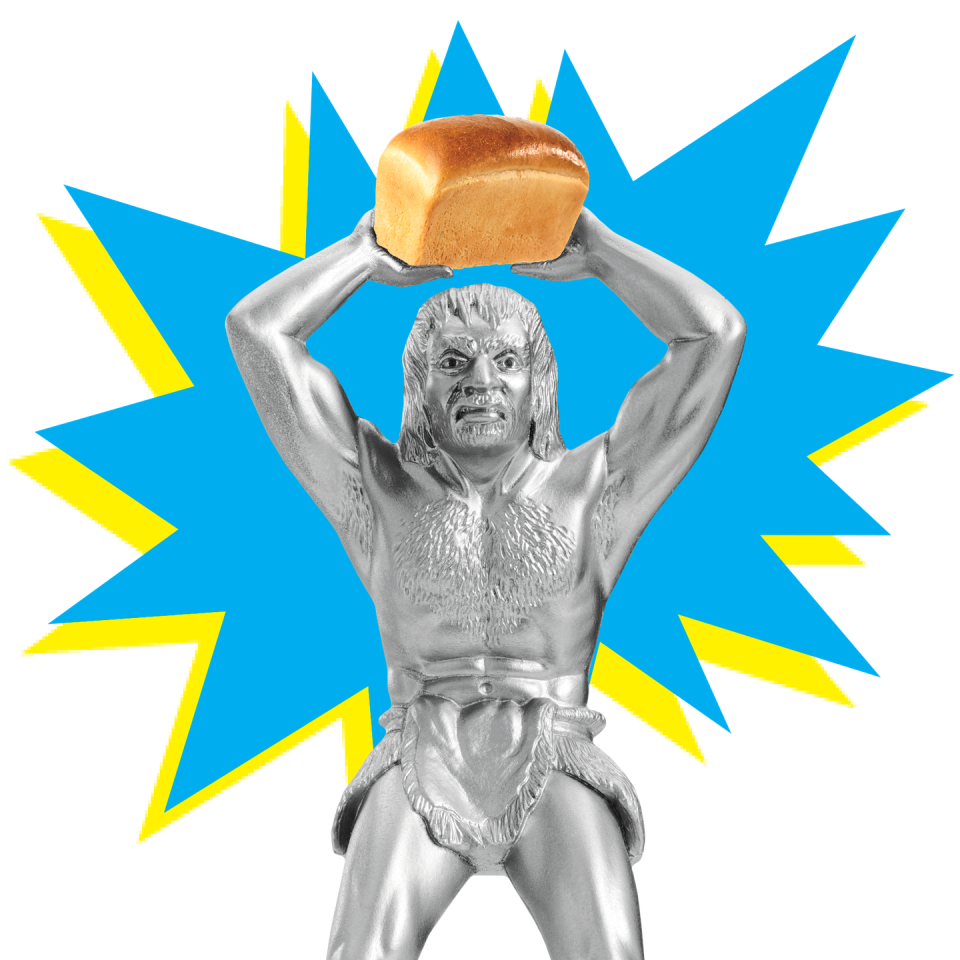
Paleolithic early humans’ consumption of starchy foods rapidly expands their brains.
10,000 B.C.

Humans begin to grow wheat in and around the Fertile Crescent.
5,000 B.C.
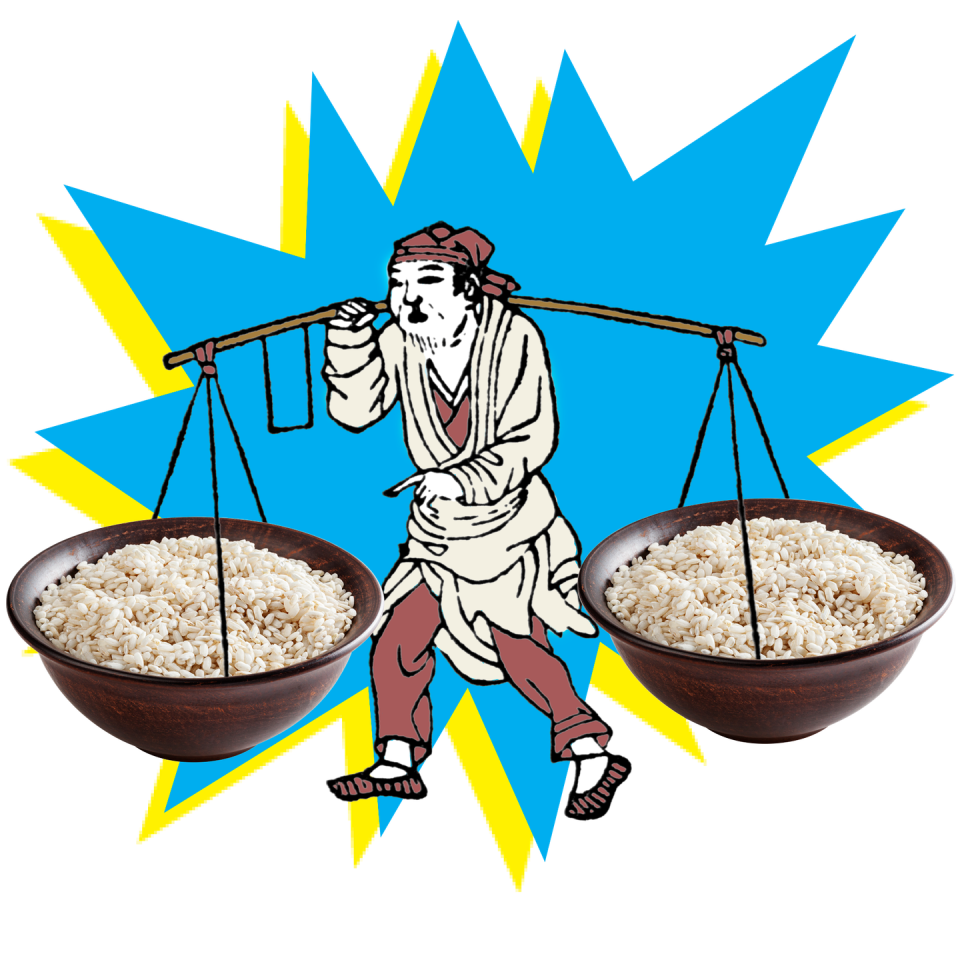
Humans in Asia start cultivating rice, a crop that goes on to become the staple carbohydrate for half the world’s population.
168 B.C.

Taoist priests in China practice the avoidance of grain to help them achieve immortality.
1838
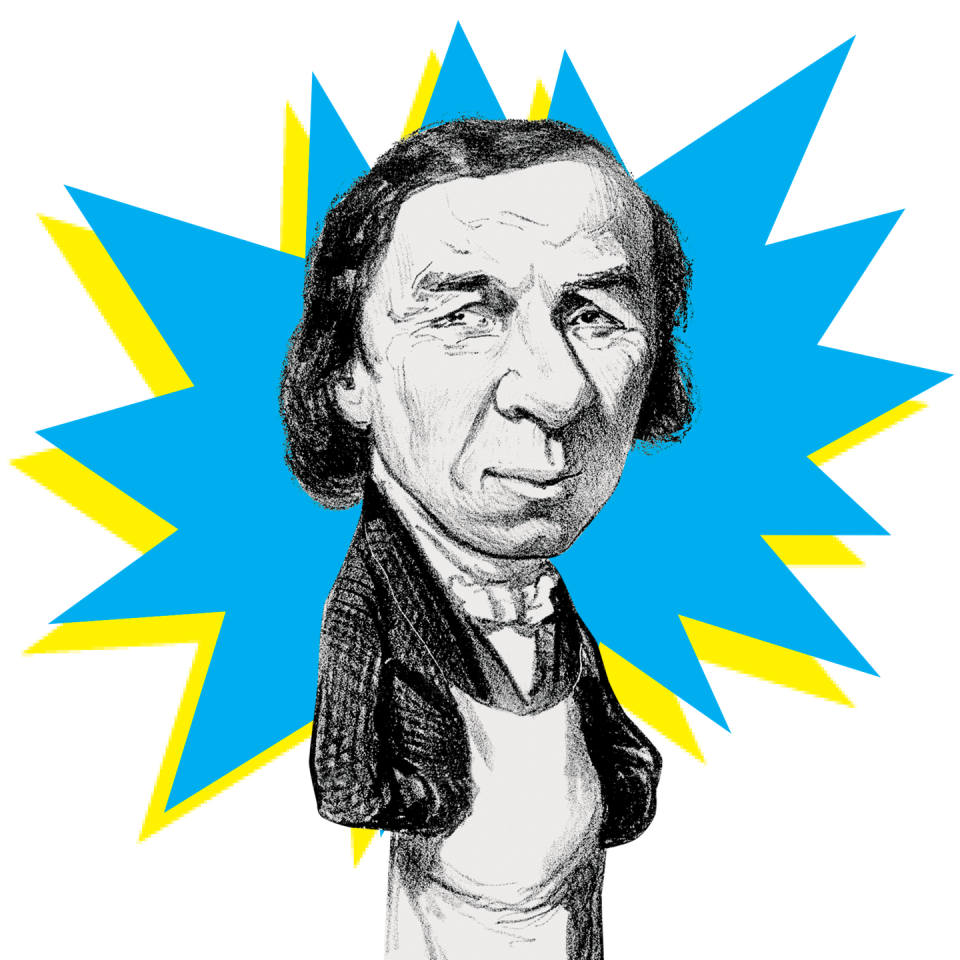
Jean-Baptiste Dumas coins the term glucose for the sugar obtained from honey, grapes, and starch.
1921

Wonder Bread—white, sugary, and enriched—hits the market.
1928
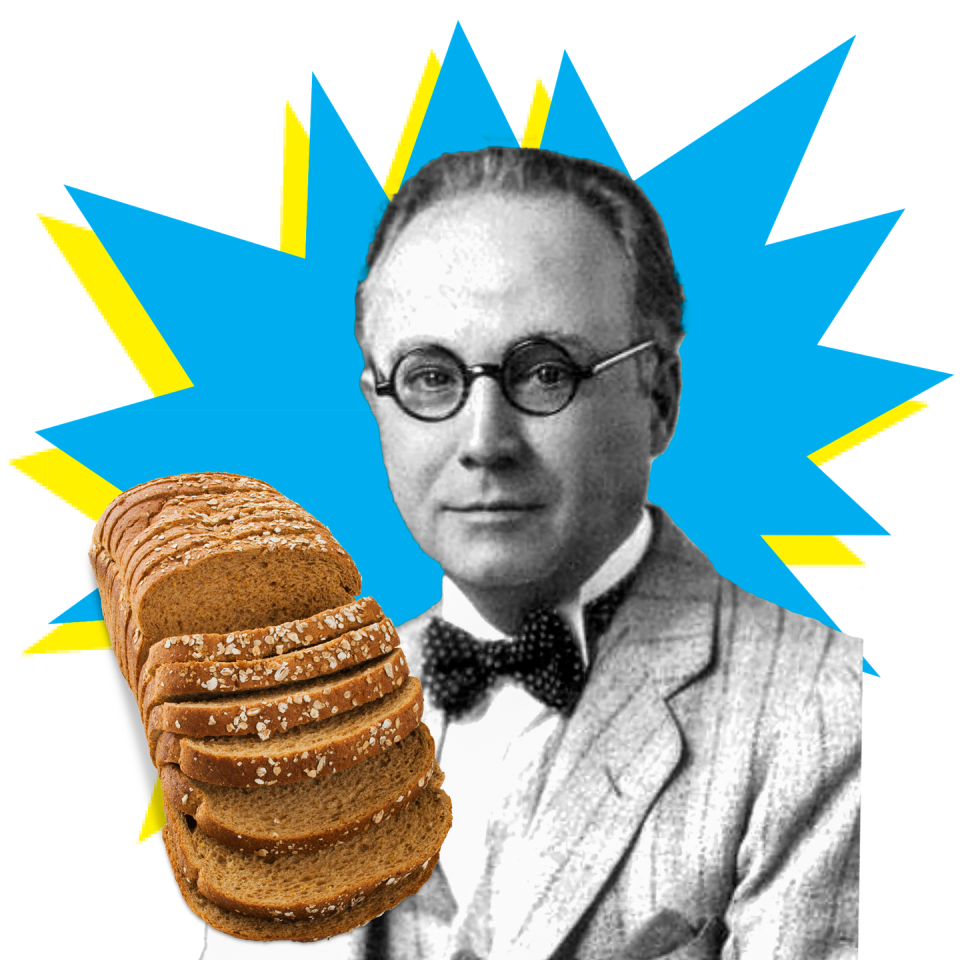
Otto Frederick Rohwedder invents a bread-slicing machine, the best invention since...?
1972

Dr. Robert Atkins publishes Dr. Atkins’ Diet Revolution.
1982
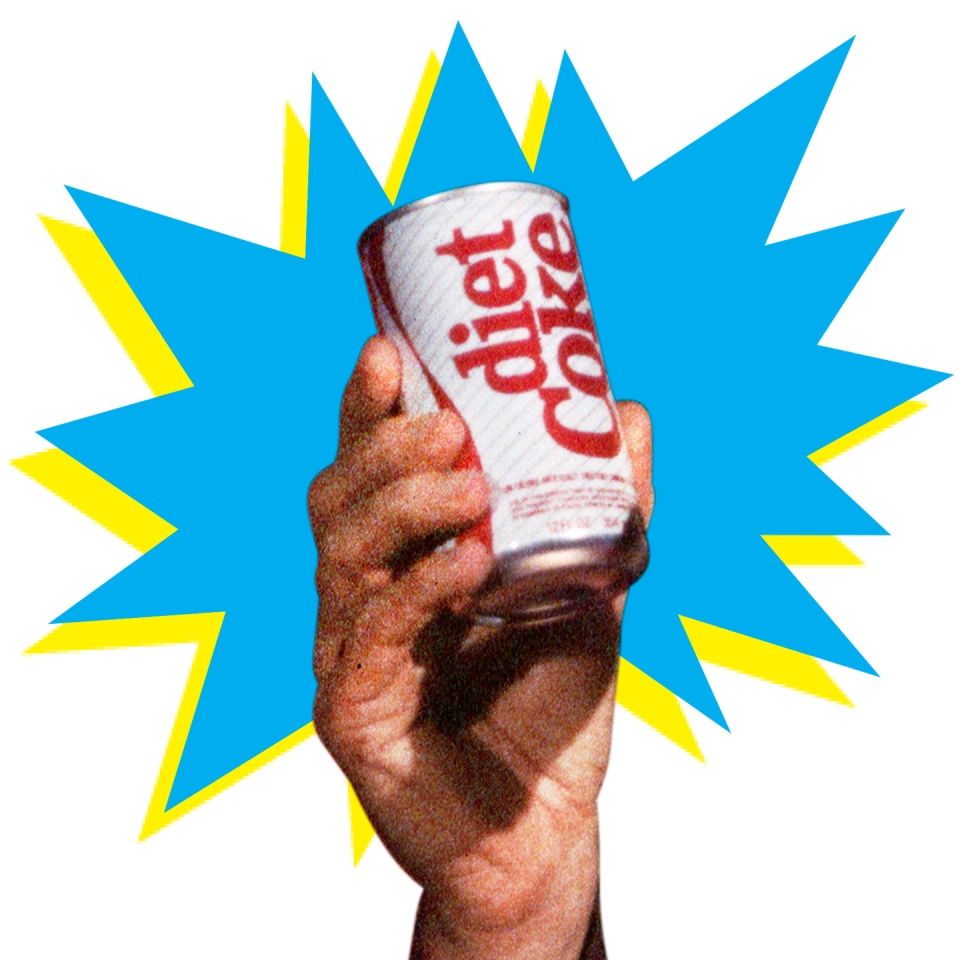
Diet Coke debuts with zero calories and sugar (and carbs).
1992

The first USDA Food Pyramid recommends six to 11 servings of grains a day. (Some critics say this approach leads to weight gain.)
1994
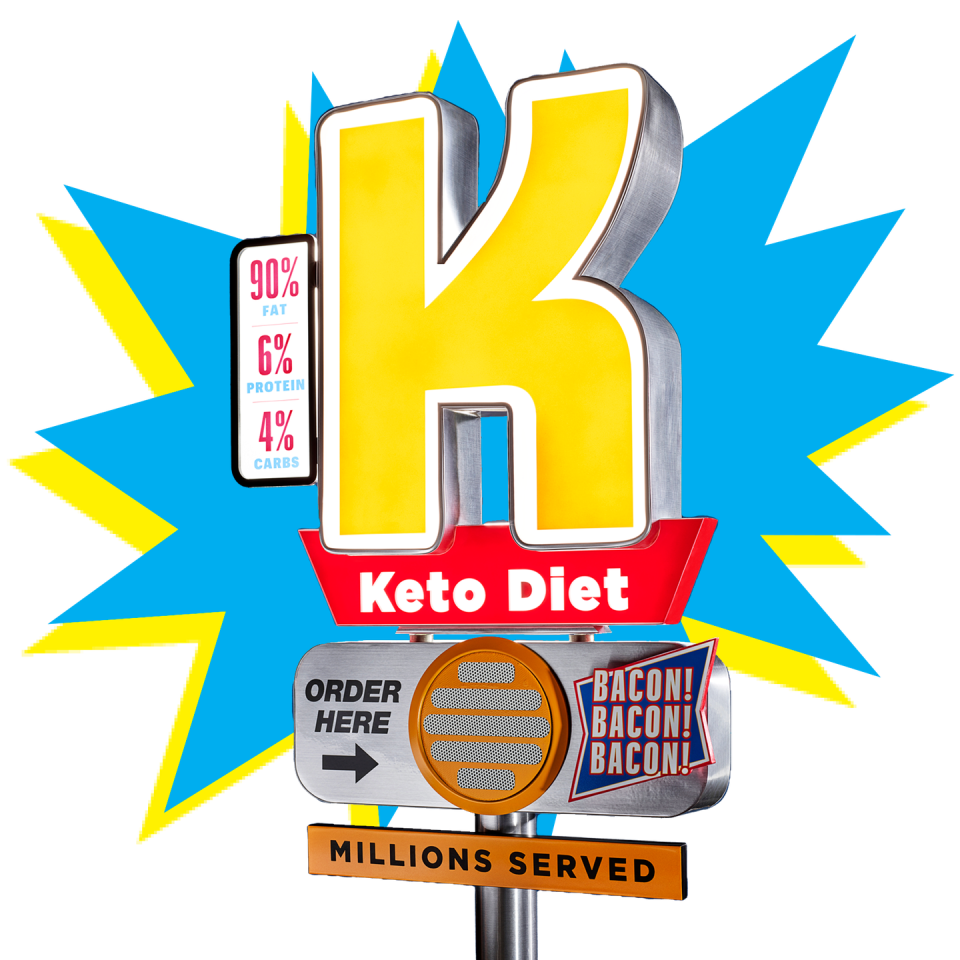
Interest in the low-carb ketogenic diet begins to grow as a weight-loss plan, after a Dateline episode on the topic.
2016

The FDA defines “added sugars,” versus natural sugars. (Both are carbs.)
2019
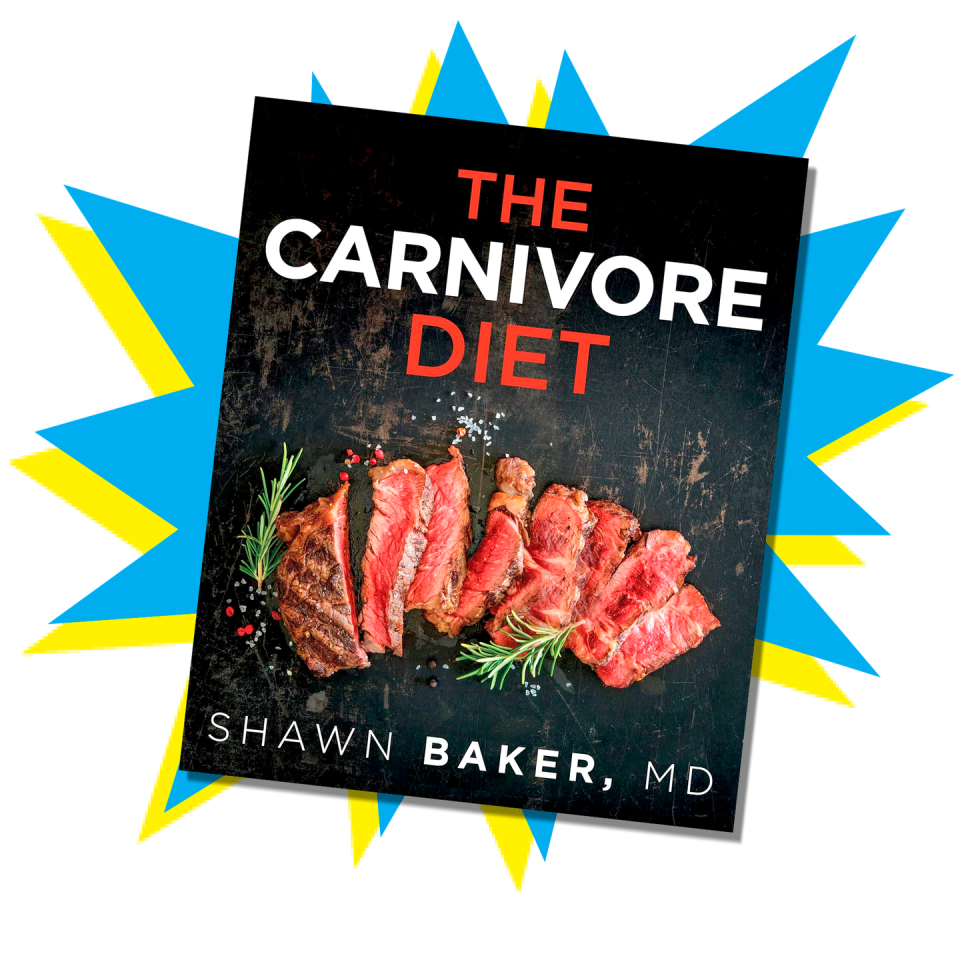
Dr. Shawn Baker publishes The Carnivore Diet, a no-carb diet based entirely on meat.
2020

During Covid lockdowns, a study in Frontiers in Public Health warns of the immunity-damaging effects of too much carbohydrate consumption.
2023

The “resistant-starch” trend takes over TikTok, and we’re now all eating cold spaghetti, apparently.
A version of this article appeared in the May/June 2024 issue of Men's Health.
You Might Also Like

